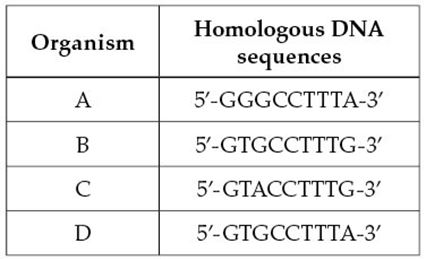Chapter 21. Phylogeny and Molecular Evolution Simulation
Phylogeny and Molecular Evolution Simulation
Question 1 of 4
Activity 21.2 Quiz
Which statement is true of the parsimony method for reconstructing phylogeny?
| A. |
| B. |
| C. |
| D. |
Correct. See Key Concept 21.2 Phylogeny Can Be Reconstructed from Traits of Organisms
Incorrect. See Key Concept 21.2 Phylogeny Can Be Reconstructed from Traits of Organisms
Activity results are being submitted...
